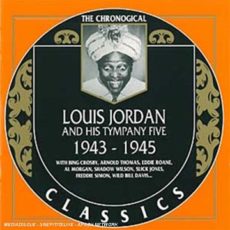
Daily Dose Of Jazz…
Albert Morgan was born on August 19, 1908 in New Orleans, Louisiana into a musical family. He started on clarinet, then learned baritone saxophone, tuba, and bass. After taking lessons with Simon Marrero around 1919, he played with his brother Isaiah. Relocated briefly to Pensacola, Florida he played with Mack Thomas and Lee Collins.
Returning to New Orleans to play on riverboats with Fate Marable and Sidney Desvigne. Al went on to play with Davey Jones and Cecil Scott and recorded with the Jones & Collins Astoria Hot Eight.
In the 1930s, Morgan led his own band and played as a sideman with Fats Waller, Les Hite, Zutty Singleton, Louis Jordan, and Sabby Lewis. This period saw him performing with Otto Hardwick and then spent four years with Cab Calloway from 1932 to 1936.
After leaving the Calloway orchestra, Al settled in California, playing live, on record, and on film. His film appearances include a feature on “Reefer Man” with the Calloway band in International House, Cab Calloway’s Hi-De-Ho, with Louis Armstrong in Going Places, and in The Gene Krupa Story.
From the 1950s to the 1970s, Morgan played extensively with Buddy Banks in a duo. Morgan recorded with Chu Berry, Coleman Hawkins, Don Byas, Jack Teagarden, Jay McShann, Red Allen, and T-Bone Walker.
Double bassist Al Morgan passed away on April 14, 1974 in Los Angeles, California.
More Posts: bandleader,bass,history,instrumental,jazz,music
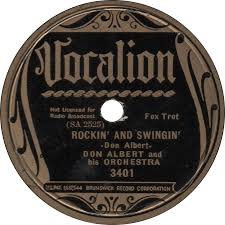
Daily Dose Of Jazz…
Don Albert was born Albert Anité Dominique, on August 5, 1908 in New Orleans, Louisiana. His uncle was Natty Dominique, and he was also a relative of Barney Bigard. He got his start playing in parade brass bands in New Orleans at the beginning of the 1920s. He toured with the territory band of Alphonse Trent through the Southwest United States in 1925, then played with Troy Floyd at the Shadowland Ballroom in San Antonio from 1926 to 1929.
Leading his own territory bands out of Texas in the 1930s and 1940s, Albert had in his band sidemen that included Alvin Alcorn, Louis Cottrell, Jr., and Herb Hall. After 1932 he acted more in a manager’s capacity than as a performer. His bands played in Mexico, Canada, and New York City in 1937 and won rave reviews from newspapers, but the band only recorded eight sides for Vocalion Records.
Disbanding this group around 1939 due to economic conditions, Don found work in civil service and managing a San Antonio nightclub in the early to mid-1940s, only to be shut down in 1948 by local authorities. By 1949 his group played the Palace Theater in New York.
The 1950s saw him returning to active performance, playing with Buddy Tate in 1966, the New Orleans Jazz Festival in ‘69, and in small groups through the 1970s. Trumpeter and bandleader Don Albert passed away on March 4, 1980 in San Antonio, Texas.
More Posts: bandleader,history,instrumental,jazz,music,trumpet
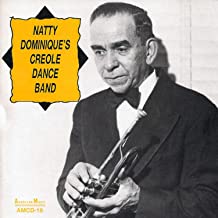
Daily Dose Of Jazz…
Anatie “Natty” Dominique was born on August 2, 1896 in New Orleans, Louisiana of Afro-Italian descent. Claiming to be a direct descendant of Dominique You, the half-brother of the pirate Jean Lafitte, he studied with Manuel Perez.
Moving to Chicago, Illinois in 1913, over the course of more than three decades there, Dominique played with a number of New Orleans jazzmen, including Louis Armstrong, Jimmie Noone, and especially Johnny Dodds, who employed him from 1928 until his death in 1940.
Shortly afterward, Natty was forced to retire due to a heart condition, keeping him out of the music business for almost a decade. Returning to part-time work with a small combo in the 1950s, he played up till his death.
Trumpeter Natty Dominique, who recorded for American Music Records, Challenge Records, and Black Swan Records, passed away on August 30, 1982 in Chicago.
More Posts: bandleader,history,instrumental,jazz,music,trumpet
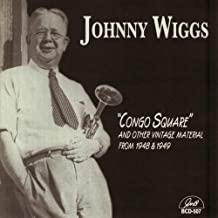
Daily Dose Of Jazz…
Johnny Wiggs, was born John Wigginton Hyman on July 25, 1899 in New Orleans, Louisiana. He started his music career on the violin but soon adopted the cornet. His main stylistic influences were Bix Beiderbecke and King Oliver, who Wiggs insisted did his best work in New Orleans in the years before he moved up North to New York City and was recorded.
Returning to New Orleans in the late 1920s, he took a job as a teacher in Louisiana and at night played in New Orleans jazz clubs. During this period in his life, he made his first recordings as John Hyman’s Bayou Stompers.
In the 1940s he returned to being a full-time musician, leading several bands and recording many songs. He used the pseudonym Johnny Wiggs, as jazz was still looked down on in some circles. He went on to be an important figure in the local traditional jazz revival.
The 1960s saw Wiggs performing part-time, remaining active until the Seventies. He mentored George Finola and Pete Fountain was one of his more famous pupils. He helped found the New Orleans Jazz Club and was a force behind the jazz revival in the 1940s.
Cornetist and bandleader Johnny Wiggs passed away on October 10, 1977 in his hometown of New Orleans.
More Posts: bandleader,cornet,history,instrumental,jazz,music
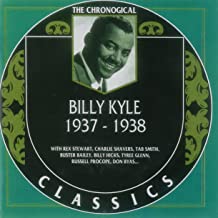
Daily Dose Of Jazz…
William Osborne Kyle was born on July 14, 1914 in Philadelphia, Pennsylvania and began playing the piano in school. By the early 1930s, he was working with Lucky Millinder, Tiny Bradshaw, and later the Mills Blue Rhythm Band. In 1938, he joined John Kirby’s sextet but was drafted in 1942. After the war, he worked with Kirby’s band briefly and also worked with Sy Oliver. He then spent thirteen years as a member of Louis Armstrong’s All-Stars, performing in the 1956 musical High Society.
A fluent pianist with a light touch, Kyle never achieved much fame, but he always worked steadily. He had a few opportunities to record as a leader, seventeen songs in all, just some octet and septet sides in 1937, two songs with a quartet in 1939, and outings in 1946 with a trio and an octet.
He is credited as the co-author of the song Billy’s Bounce recorded by the Modern Jazz Quartet in 1992 with Bobby McFerrin on the album MJQ and Friends. He didn’t record during his Armstrong years, however, he recorded with Al Hibbler and Buck Clayton.
Pianist Billy Kyle, best known as an accompanist, passed away on February 23, 1966 in Youngstown, Ohio.
More Posts: bandleader,composer,history,instrumental,jazz,music,piano



